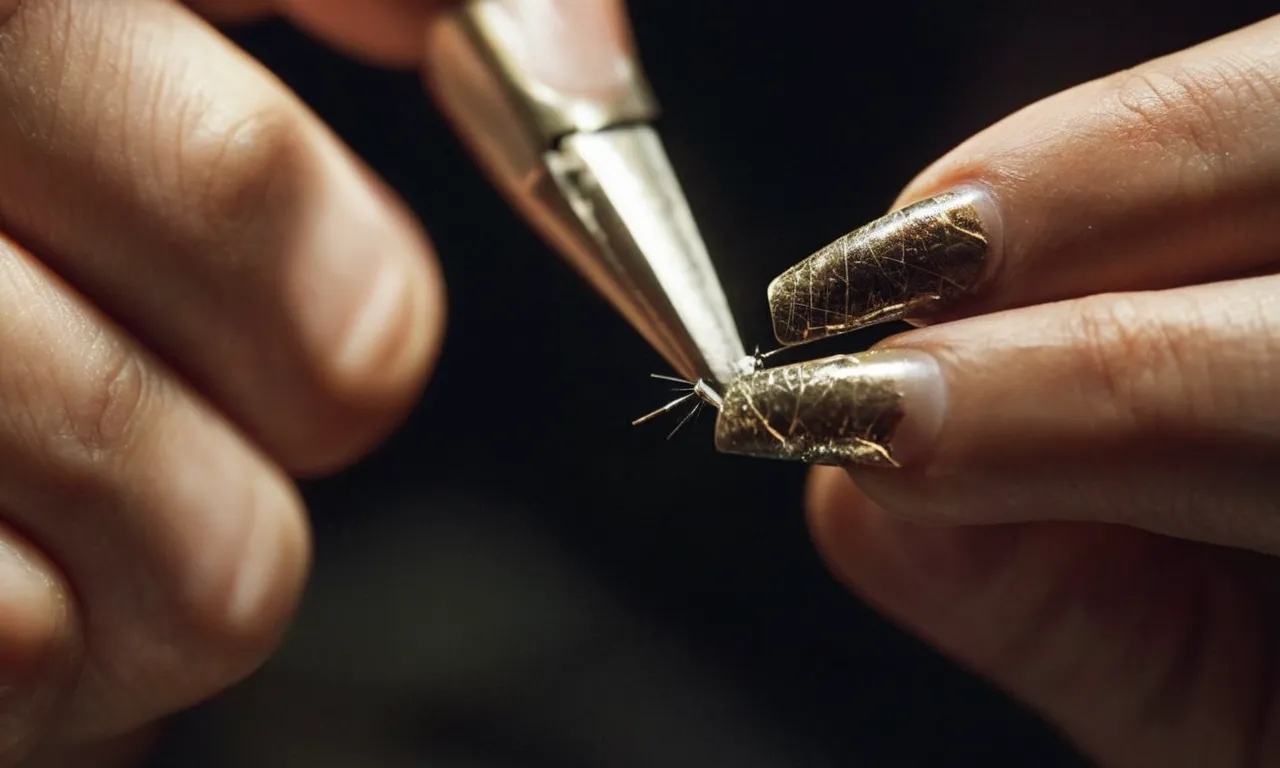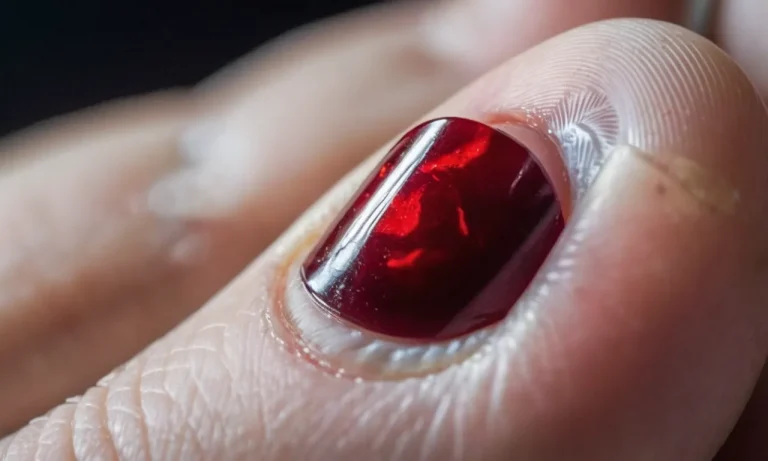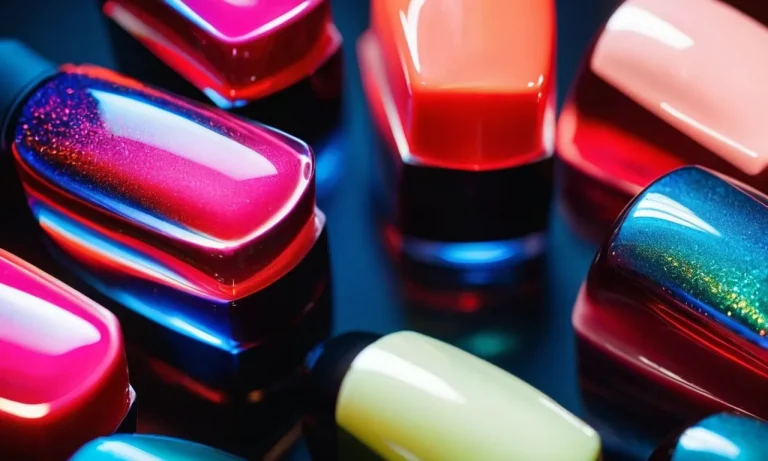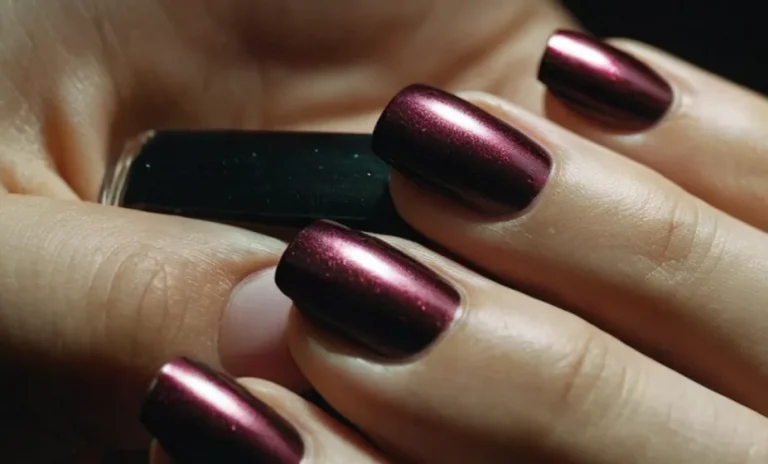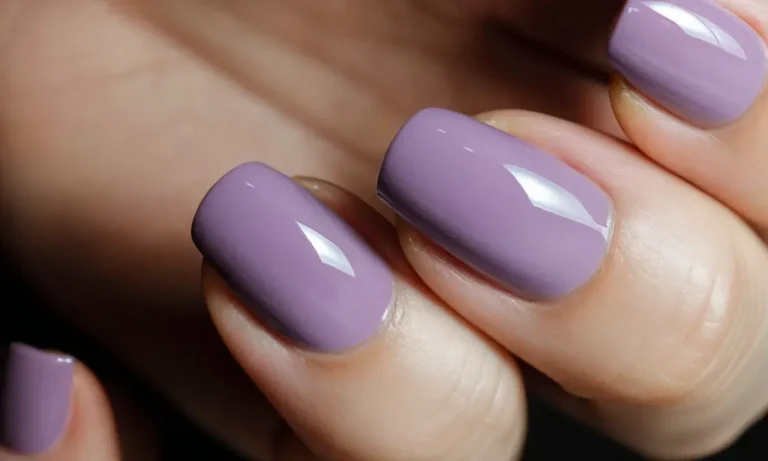What To Do If You’Ve Filed Your Nail Bed Too Much
Have you ever filed your nails, only to realize you’ve taken off too much of the nail bed? Overfiling your nail beds is a common grooming mistake that can result in pain, discomfort, and sometimes even infection.
If you’re short on time, here’s a quick answer to your question: Use a nail strengthener, keep nails short while they heal, and avoid excessive moisture to help your nails recover from overfiling. Be gentle during the regrowth period.
In this comprehensive guide, we’ll cover everything you need to know about fixing overfiled nails. You’ll learn what causes this issue, symptoms to watch for, treatment options to promote healthy regrowth, and tips to avoid overfiling in the future.
What Causes Overfiling of Nails?
Filing Too Deep Into Nail Bed
Filing too aggressively into the nail bed is one of the most common causes of overfiling. The nail bed contains blood vessels and nerves, so filing into it can cause pain, bleeding, and damage. Using nail files and buffers meant for natural nails instead of acrylics can lead to removing too much keratin from the nails.
The pressure and direction used when filing also plays a role. Filing back and forth horizontally with too much pressure can thin out the nail plates. Instead, use light, vertical strokes going from cuticle to tip. Slowing down helps avoid overzealous filing.
Patience prevents weakening the nails too much.
Using Abrasive Nail Files or Buffers
Highly abrasive nail files or buffers grind down the nail plates too rapidly. Look for files and buffers specifically made for natural nails, not acrylics or gels which require more abrasion. Medium grit emery boards are ideal for natural nails.
Using a fine grit buffer occasionally helps smooth nails, but avoid coarse buffers. Limit buffing to once a week max to prevent thinning the nails. Don’t use metal nail files or foot files on fingernails as they are too abrasive. Gentler nail files reduce the chances of overfiling and irritation.
Proper tools prevent damaging the nail bed when shaping or buffing the nails.
Filing Nails Too Often
Frequent filing wears down the nail plates over time. Constantly reshaping or buffing the nails does more harm than good. As a general rule, limit filing to once or twice per week max. The nails grow about 3-4 millimeters per month on average, so frequent filing is unnecessary in most cases.
Letting the nails grow out a bit between shaping allows the nail plate to strengthen. Otherwise, they become thin and peel easily. Also avoid picking, peeling or biting the nails, which damages the nail bed. Trimming hangnails is better than tearing them.
Proper nail care limits the need for excessive filing. Let those tips grow and avoid overmanicuring!
Signs and Symptoms of Overfiling
Sensitivity and Pain
Filing the nail bed too short can lead to sensitivity and pain, especially when pressure is applied to the fingertips. The nail bed contains nerves and blood vessels, so removing too much keratin exposes these delicate structures to irritation.
Many people describe throbbing, aching pain when the overfiled nail bed is touched. Typing on a keyboard or using tools can become uncomfortable or even unbearable. This pain is the body’s warning sign that damage has occurred and healing is needed.
Ragged, Thin Nail Edges
Overfiling causes the nail edges to become ragged, thin, and uneven instead of smooth and uniform. The keratin layers that provide strength and structure to the nail plate are damaged, causing splitting, peeling, and breakage. This leads to nails that look poorly manicured and unhealthy.
In severe cases, nails may become misshapen and difficult to grow out. Frequent overfiling can also result in short, stunted nail growth over time.
Discoloration Near Cuticle
Sometimes a dark or reddish discoloration forms near the cuticle after overfiling. This can indicate bleeding beneath the nail plate, which appears through the translucent keratin. Blood blisters may also pop up.
The color change is the result of trauma to the delicate capillaries along the nail bed margin. While unsightly, this type of bruising and bleeding is harmless and usually grows out quickly as the nails regenerate.
Inflammation or Infection
If the skin around the nail becomes red, hot, swollen, and tender, it could signal inflammation or infection. Filing into the sidewalls can create tiny cuts or openings for bacteria and fungi to enter and colonize.
Signs of a nail bed infection include yellow or green discharge (pus), a foul odor, and severe throbbing pain that worsens over time. See a doctor promptly if any of these worrisome symptoms develop after overfiling nails.
Treatments and Home Remedies for Overfiled Nails
Use a Nail Strengthener or Hardener
One of the best ways to help damaged, overfiled nails recover is to use a nail strengthening treatment (also called a nail hardener). These products work by depositing nutrients into the nail plate to make it less prone to peeling, cracking and breakage.
Look for nail hardeners that contain ingredients like calcium, keratin, biotin, and vitamins C and E. Apply it to clean nails daily as directed on the package. With consistent use, you should see improvement in about 2-4 weeks as the nail grows out.
Popular and clinically-tested nail strengtheners include OPI Nail Envy and Sally Hansen Hard as Nails.
Keep Nails Trimmed Short While Growing Out
It’s important to avoid putting too much pressure and stress on already weakened nails. So while you’re treating them and waiting for them to grow out healthy again, keep your nails trimmed short. Clip them straight across to remove any ragged edges.
File the edges gently with a fine emery board just to smooth them out – no major shaping or filing. Let them grow out without manipulating the nail plates. In about 4-6 weeks, you should have some renewed length with healthier nail beds.
Avoid Excessive Moisture
Too much water exposure can lead to peeling and cracking of thin, damaged nails. When washing dishes, cleaning or bathing, try to minimize direct contact between your nails and moisture. Wear rubber gloves for dish washing, and limit time soaking in a bath.
Always dry your hands and nails thoroughly after washing. Moisture gets trapped under nails easily, so carefully dry under nails as well.
Apply Cuticle Oil or Cream
Massaging cuticle oil or cuticle cream into the nail beds can help condition and strengthen them. These products contain hydrating ingredients like jojoba, vitamin E, and shea butter. Gently rub a few drops of oil over each nail 1-2 times per day.
A vitamin-enriched cuticle cream can also be applied lightly. This helps nourish the nail matrix and stimulate growth of healthy new nails.
Take a Nail Supplement
If your nails are very thin and peeling, you may benefit from taking an oral supplement to boost nail growth. Look for one that contains biotin, a B complex vitamin that supports production of keratin, the protein that makes up your nails.
The recommended daily intake is 2.5 mg. Other helpful nutrients include vitamins C, E and B5 (pantothenic acid), plus zinc and silica. Give the supplement 2-3 months to strengthen nails from the inside out.
Medical Treatments for Severe Cases
Prescription Antifungal or Antibacterial Medication
If the nail bed laceration leads to a fungal or bacterial infection that won’t clear up with over-the-counter treatments, a doctor may prescribe an oral or topical antibiotic or antifungal medication.
Common prescriptions include terbinafine for fungal infections and cephalexin for bacterial infections. These stronger medications can help clear up stubborn infections that have penetrated deeper into the nail bed tissue.
Professional Nail Services
In severe cases where part or all of the nail has separated from the nail bed, a podiatrist or dermatologist may recommend professional nail services to remove the damaged parts and promote proper regrowth. Services may include:
- Debridement – Carefully trimming off loose or infected nail parts
- Chemical or surgical matricectomy – Destroying part of the nail matrix to stop regrowth if the nail damage is very severe
- Zapic Nail Reconstruction – A specialized treatment using paper fiber material to protect the nail bed as the natural nail regrows underneath
These professional treatments allow the nail bed to heal properly and reduces the chances of continued pain, infection, and permanent thickened nail regrowth.
Surgery for Deep Lacerations
In the worst cases where the nail bed laceration is very deep, surgery may be needed to reattach the separated nail bed or stitch together a torn nail bed. This is known as nail bed repair or nail bed revascularization surgery. It aims to:
- Stop heavy bleeding
- Prevent loss of nail plate fragments left in the lacerated tissue
- Reduce pain and chance of infection
- Promote proper reattachment and regrowth of the nail
The surgery is typically done under local anesthesia. Recovery takes around 3 months as the nail regrows adhered to the repaired nail bed. Hand functionality is reduced during recovery time. According to research published by the National Center for Biotechnology Information, with prompt surgical treatment, over 92% of patients achieve near-normal nail regrowth.
Tips to Avoid Overfiling Nails
Use Gentle Filing Techniques
When filing nails, it’s important to use gentle, even strokes. Sawing back and forth aggressively can weaken nails and thin them out too much. Instead, apply light pressure and file in one direction, moving from the outside of the nail towards the center.
Only go over each nail a few times before moving on. Overfiling wears down the nail layers and can cause harm.
Choose Files and Buffers Carefully
Rough emery boards and metal nail files tend to be too harsh on natural nails. Opt for fine-grit nail files specifically designed for unmanicured nails. Look for crystal, ceramic, or other gentle surface files.
Also choose soft buffing blocks when shining up nails, rather than coarse buffers that can thinning nails if overused.
Don’t File Nails Too Often
Filing nails frequently can take off too much of the nail surface over time. Stick to filing and reshaping nails every 2-3 weeks at most. Filing once a week or more often is usually excessive and runs the risk of causing excessive thinning of the nail plates.
Know When to Stop Filing
Pay attention to nail thickness while filing and stop when the nails look and feel smooth. According to nail care experts at WebMD, healthy nails should measure around 3 millimeters thick. If nails become translucent or paper-thin, it’s a sign they’ve been filed down too much.
Let them grow out and avoid filing for a few weeks to strengthen them.
Moisturize and Protect Nails
Using nail strengthening treatments can help nourish nails and prevent overfiling damage. Daily moisturizers like jojoba oil or aloe keep nails flexible and make them less prone to cracking and peeling if they get thin.
Additionally, wearing gloves for wet work and applying a clear base coat minimizes exposure to water and chemicals that dry out nails.
By being mindful of filing techniques, equipment, and frequency, you can keep nails in great shape without going overboard. Give fragile nails a break periodically and care for them with nourishing products.
If you notice pronounced thinning or fragility, leaving them alone for a few weeks allows time for new, healthy nail growth. With some simple precautions, you can maintain strong, beautiful nails that reflect excellent care.
Conclusion
Overfiling your nails can cause discomfort, but with proper care and grooming adjustments, your nails can fully recover. Use nail strengtheners, keep nails trimmed short, and avoid excess moisture while they grow out. See a doctor if you experience persistent pain, swelling, or discoloration.
With careful filing techniques and awareness of proper nail anatomy, you can avoid overfiling issues in the future. Give your nails the moisture and nutrients they need to regenerate a healthy nail plate. Happy and healthy nails are within your reach with the right knowledge and care.

